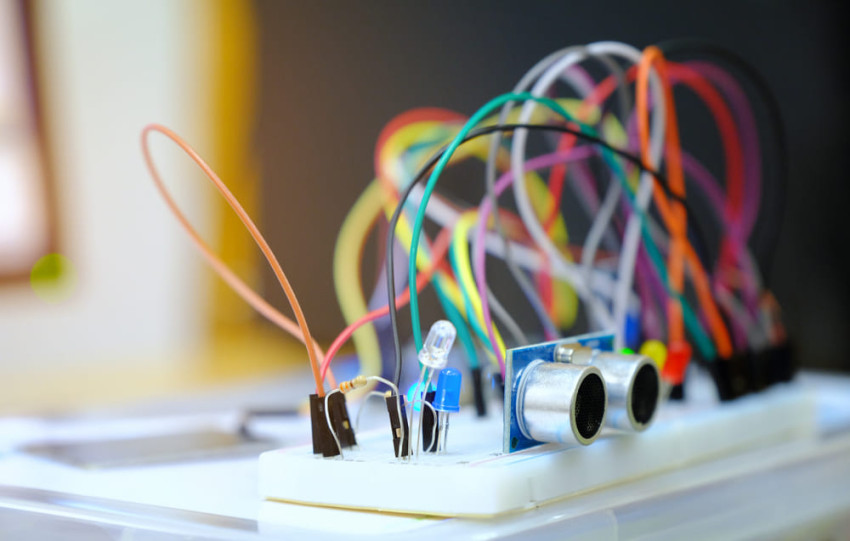
The manufacturing industry has undergone significant transformations over the years, with advancements in technology playing a crucial role. One such transformative technology is the Internet of Things (IoT). IoT has revolutionized the manufacturing sector by enabling connectivity, automation, and data-driven decision-making. In this article, we will explore how IoT is reshaping the manufacturing industry and the benefits it brings to businesses.
Understanding IoT in Manufacturing
What is IoT?
The Internet of Things (IoT) refers to the network of interconnected devices, sensors, and machines that can communicate and exchange data with each other over the internet. These devices are embedded with sensors, software, and connectivity capabilities, allowing them to collect and transmit data in real-time.
IoT in Manufacturing
In the context of manufacturing, IoT involves connecting various components of the production process, including machinery, equipment, inventory systems, and even products themselves. This interconnected network enables seamless communication and data sharing, leading to improved efficiency, productivity, and decision-making.
The Impact of IoT on the Manufacturing Industry
1. Enhanced Operational Efficiency
IoT enables manufacturers to monitor and optimize their operations in real-time. By connecting machines and equipment, manufacturers can gather data on performance, maintenance needs, and energy consumption. This data can be analyzed to identify bottlenecks, inefficiencies, and potential areas for improvement. With this information, manufacturers can make data-driven decisions to streamline operations, reduce downtime, and optimize resource allocation.
2. Predictive Maintenance
Traditionally, maintenance in manufacturing has been reactive, leading to unexpected breakdowns and costly downtime. IoT changes this by enabling predictive maintenance. By collecting real-time data from sensors embedded in machinery, manufacturers can monitor equipment health, detect anomalies, and predict maintenance needs. This proactive approach helps prevent breakdowns, reduce downtime, and optimize maintenance schedules, leading to significant cost savings and improved productivity.
3. Supply Chain Optimization
IoT plays a crucial role in optimizing the supply chain in manufacturing. By connecting inventory systems, suppliers, and logistics providers, manufacturers can gain real-time visibility into inventory levels, demand patterns, and shipment tracking. This visibility allows for better inventory management, reduced stockouts, improved order fulfillment, and enhanced overall supply chain efficiency. IoT also enables the implementation of just-in-time manufacturing, where production is synchronized with demand, minimizing waste and inventory holding costs.
4. Quality Control and Product Traceability
Maintaining high-quality standards is essential in manufacturing. IoT facilitates real-time monitoring of production processes, enabling manufacturers to identify quality issues early on. By collecting data from sensors and analyzing it in real-time, manufacturers can detect deviations from desired parameters and take corrective actions promptly. Additionally, IoT enables product traceability by tracking and recording information about each product's journey through the manufacturing process, ensuring accountability and facilitating recalls if necessary.
5. Improved Worker Safety and Efficiency
IoT can enhance worker safety and efficiency on the manufacturing floor. Wearable devices equipped with sensors can monitor workers' vital signs, detect hazardous conditions, and provide real-time alerts. This helps prevent accidents and ensures a safer working environment. IoT can also provide workers with real-time instructions and guidance, improving their productivity and reducing errors. By automating repetitive and mundane tasks, workers can focus on more complex and value-added activities.
Real-World Examples of IoT in Manufacturing
1. Predictive Maintenance at Rolls-Royce
Rolls-Royce, a leading aerospace manufacturer, utilizes IoT for predictive maintenance of its aircraft engines. Sensors embedded in the engines collect data on various parameters, including temperature, pressure, and vibration. This data is transmitted in real-time to Rolls-Royce's monitoring centers, where it is analyzed to detect potential issues and predict maintenance needs. This proactive approach has significantly reduced unplanned downtime and improved engine performance.
2. Smart Factory at Bosch
Bosch, a multinational engineering and technology company, has implemented IoT in its manufacturing facilities to create smart factories. IoT sensors are used to monitor and control various aspects of the production process, including machine performance, energy consumption, and product quality. This real-time data enables Bosch to optimize production, reduce energy waste, and ensure consistent product quality.
3. Connected Supply Chain at Walmart
Walmart, a global retail giant, has embraced IoT to optimize its supply chain operations. IoT sensors are used to track inventory levels, monitor product freshness, and optimize transportation routes. This real-time visibility into the supply chain allows Walmart to improve inventory management, reduce waste, and ensure timely delivery of products to its stores.
The Future of IoT in Manufacturing
The potential of IoT in manufacturing is vast, and its impact is expected to grow in the future. Here are some important trends and advancements to keep an eye on:
1. Edge Computing
Edge computing involves processing data closer to the source, at the edge of the network, rather than sending it to a centralized cloud server. This method decreases latency and enables real-time decision-making. In manufacturing, edge computing will enable faster response times, enhanced security, and improved reliability for IoT-enabled systems.
2. Artificial Intelligence and Machine Learning
The combination of IoT and artificial intelligence (AI) or machine learning (ML) will unlock new possibilities in manufacturing. AI and ML algorithms can analyze vast amounts of data collected by IoT devices to identify patterns, make predictions, and optimize processes. This integration will lead to more intelligent and autonomous manufacturing systems.
3. Blockchain for Supply Chain Transparency
The potential of blockchain technology extends to transforming supply chain transparency and traceability. By leveraging blockchain, manufacturers can create an immutable and transparent record of every transaction and movement within the supply chain. This will enhance trust, reduce fraud, and enable seamless collaboration among stakeholders.
4. 5G Connectivity
The rollout of 5G networks will further accelerate the adoption of IoT in manufacturing. With its ultra-low latency and high bandwidth capabilities, 5G will enable real-time communication and data transfer between IoT devices. This will unlock new use cases and applications, such as remote monitoring, augmented reality, and robotics.
Conclusion
The integration of IoT in the manufacturing industry is transforming the way businesses operate. From enhanced operational efficiency to predictive maintenance, IoT offers numerous benefits for manufacturers. Real-time data analytics, supply chain optimization, and improved worker safety are just a few examples of the positive impact IoT brings to the manufacturing sector. As technology continues to evolve, the future of IoT in manufacturing looks promising, with advancements in edge computing, AI, blockchain, and 5G connectivity. Embracing IoT is no longer an option but a necessity for manufacturers looking to stay competitive in today's digital era.




